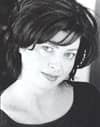Clinicians look at imaging and other enlightened ways to speed recovery for cancer patients.

|
| Marianne Matthews |
Imagine you’re a commercial airline pilot in the prime of your life. You have an exciting (even sexy) career. You’re in total control. Then one day—out of the blue—you’re struck with a seizure. Turns out it’s a brain tumor. Not only do you endure two surgeries, radiation treatments, and speech therapy, you’re stripped of your career. Your entire sense of self is shaken to the core.
But you’re a pilot. You know how to navigate! … A few years pass and you’re getting back on track with your new, if different, life. But talk about bum luck. Suddenly, you get a diagnosis of prostate cancer. … This should be a day on the beach compared with brain surgery, right? Wrong. You’re weary, frustrated, fed up. You’ve had it with being the perpetual patient.
True story. My friend. You can imagine his sense of darkness.
Prostate cancer—which afflicts one in six American men—was the final straw. What didn’t kill him made him stronger. He’s alive, well, and the subject of a multi-media installation art exhibit—I Will Follow You Into The Darkness—by his wife, a visual and performance artist. It seems medical science and the healing power of art came together at just the right moment.
To view the exhibit, including “Walls of Radiation” made from authentic radiation masks, visit: www.rocalhoun.com.
Art and science have always been inextricably linked. Leonardo da Vinci understood and practiced both. While art cannot replace the technical tools of science, it can be cathartic and healing.
Prostate cancer is the second most lethal cancer in men. Yet many experts agree that prostate cancer care is in a state of crisis due to the lack of reliable imaging tools critical to guiding early detection and treatment. Faina Shtern, MD, of the AdMeTech Foundation, is working toward raising funds for advanced prostate imaging—or a “man-o-gram,” an imaging screening device equivalent to the mammogram for breast cancer detection. She says it would save lives and an estimated $5 billion per year in health care costs. (To learn more, listen to my podcast series with Dr Shtern: “Prostate Cancer: Future Detection Methods” – PART 1 and PART 2.)
In this issue, our feature article by Tor Valenza, “Seeing 3D,” explores the latest imaging advances for prostate cancer detection and improved guided radiation therapy.
While imaging solutions continue to evolve, radiologists and oncologists have other opportunities to speed the recovery of their cancer patients.
The American Society for Radiation Oncology (ASTRO) recently updated its award-winning patient education booklet, “Radiation Therapy for Cancer,” which provides information for patients and caregivers about various types of radiation therapy including brachytherapy and external beam treatments. To purchase printed copies, visit www.astro.org.
I recently watched a segment on the NBC evening news about a new program at Beth Israel Hospital. Cancer patients (and stressed-out staff) are made more comfortable with acupuncture, aromatherapy, reflexology, and even the simple playing of music. Some would call these alternative therapies. I call them healing arts. Physicians were skeptical—at first. But several are now converts, claiming that these methods seem to alleviate certain side effects of chemotherapy.
Think these practices sound like something from the Dark Ages? Maybe it’s time to see the light. Sometimes medical science disappoints or even fails us. But art, education, and the power of the human spirit prevail.
Marianne Matthews
Editor






